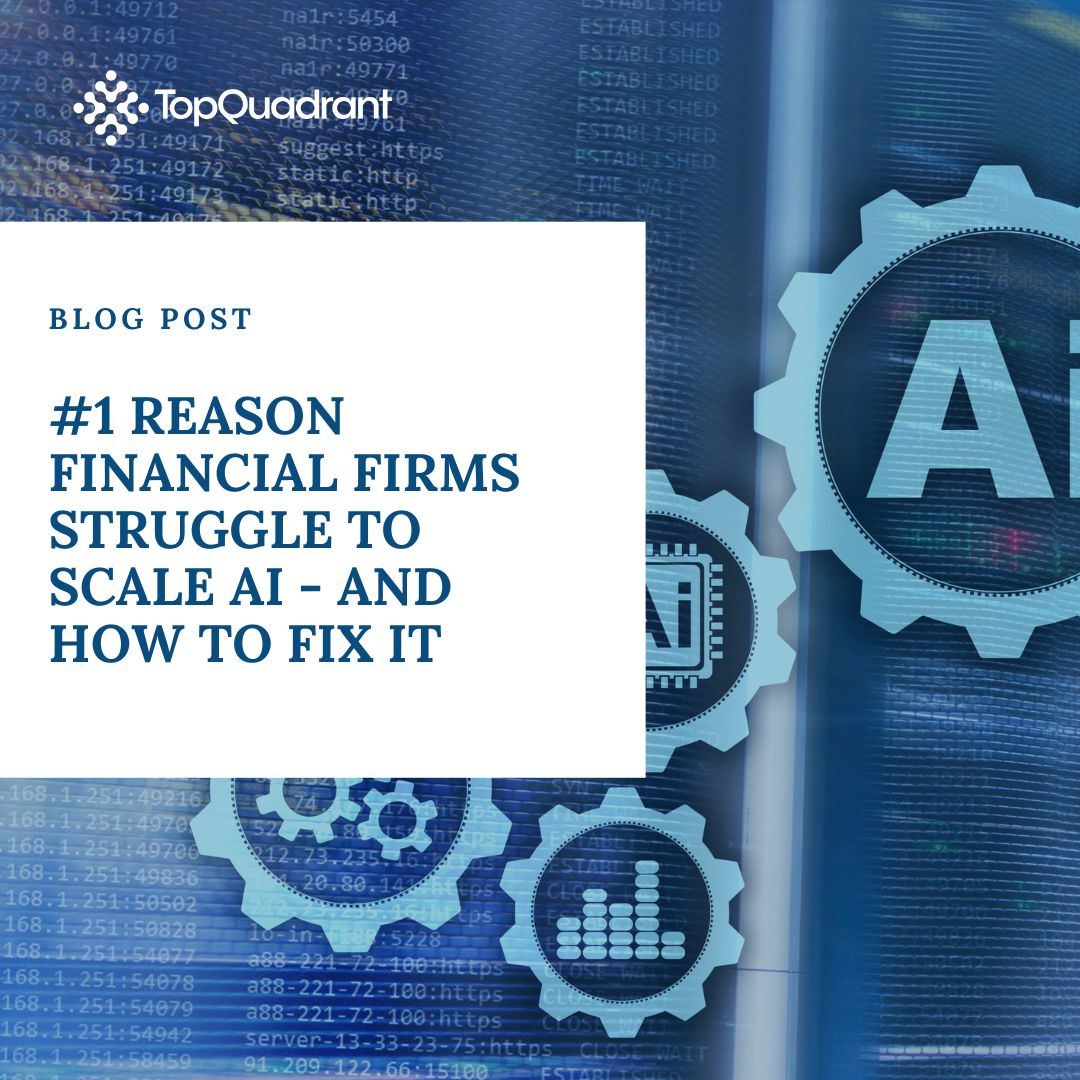TopQuadrant Glossary
Welcome to the TopQuadrant Glossary; a quick reference to key data, AI, and knowledge graph terms used throughout our platform and solutions. Explore related resources, documentation, and solution pages.
A platform that integrates, governs, and prepares data to support AI applications and workflows. TopQuadrant provides AI-ready data foundations through knowledge graphs, metadata management, and governance.
A governed resource in EDG, such as a business term, dataset, ontology, or policy. Assets represent the individual building blocks of your data governance program.
A container for related assets (e.g. ontologies, glossaries, taxonomies) stored as named graphs. Asset collections provide shared metadata and governance context.
A central catalog of agreed-upon business terms and definitions used across an organization to drive shared understanding and governance.
The practice of managing the availability, usability, integrity, and security of data. TopBraid EDG enables data governance through metadata, lineage, policies, and workflows.
A measure of the accuracy, completeness, consistency, and reliability of data. EDG enforces data quality with validation rules, lineage, and governance workflows.
A query and manipulation language for APIs that lets clients specify exactly what data they need. EDG auto-generates GraphQL schemas from SHACL and OWL models.
A semantic graph model of entities, their properties, and their relationships. EDG builds enterprise knowledge graphs to unify siloed data and metadata.
A trace of data’s origin, movement, and transformations through systems. Lineage in EDG captures both business and technical perspectives.
Capturing, storing, and governing information about data’s meaning, context, and usage. EDG delivers centralized metadata management for enterprises.
A formal model of concepts, properties, and relationships that define a domain’s structure. EDG uses ontologies as the semantic backbone of data governance.
Forms dynamically generated from ontologies and SHACL shapes, ensuring consistent structure and semantics when entering data in EDG.
A W3C standard for defining ontologies, offering rich semantics like class hierarchies and equivalence. EDG supports OWL for modeling and export.
A standard model for representing data as subject–predicate–object triples. EDG stores all assets and metadata using RDF to enable interoperability.
An RDF extension allowing statements about statements (nested triples). EDG supports RDF-star for fine-grained metadata and annotations.
Standardized data values used across systems (like country codes or currencies). EDG governs reference datasets as asset collections.
A curated collection of reference data values managed and versioned within EDG.
A W3C standard for defining rules and constraints on RDF graphs. EDG uses SHACL for schema modeling, validation, and auto-generating GraphQL schemas.
A W3C standard for modeling controlled vocabularies and taxonomies in RDF. EDG’s Vocabulary Management module uses SKOS to manage hierarchical concept schemes.
The W3C query language for RDF graphs. EDG uses SPARQL for querying and integrating data from across knowledge graphs.
An extension to SPARQL for inserting, deleting, and modifying RDF triples. EDG supports SPARQL-Update operations for controlled metadata changes.
A structured, often hierarchical classification of concepts or terms. Taxonomies in EDG are managed via SKOS-based Vocabulary Management.
TopQuadrant’s flagship platform for metadata management, knowledge graphs, reference data, business glossaries, ontology modeling, and governance.
Rules defined in SHACL to ensure that data entered in EDG conforms to required structures and constraints.
